
The site of an infamous B.C. mining disaster could get even bigger. This First Nation is going to court — and ‘won’t back down’
Xatśūll First Nation is challenging B.C.’s approval of Mount Polley mine’s tailings dam raising. Indigenous...
One year ago, helicopters dropped a squad of heavily armed police into the snow as tactical units of the RCMP gathered for a military-style raid on Wet’suwet’en territory.
The scene played out like a movie — snipers aiming at a cabin and those inside, police dogs barking and RCMP using an axe and a chainsaw to cut down the door of a tiny house. But for the Indigenous land defenders, their supporters and journalists there to document what was going on at Coyote Camp, it was all very real.
The camp was a re-occupation of the territory and an effort to protect Wedzin Kwa (Morice River) from the Coastal GasLink pipeline, being built to connect gas sources in the northeast of B.C. to a liquefaction and export facility on the Pacific coast.
In 2019, the B.C. Supreme Court issued an injunction against anyone impeding construction of the pipeline, setting the stage for police enforcement. Coastal GasLink and the B.C. government had signed agreements with five of six elected Wet’suwet’en band councils but did not receive consent from the Hereditary Chiefs. The chiefs issued the company an eviction notice in early 2020 and enforced that order again last year, leading to the raids.
RCMP arrested 15 people at gunpoint that day, bringing the two-day total to more than 30. After spending the weekend in jail cells, subjected to what they described as petty and punitive treatment, those arrested were released onto the streets of Prince George, more than 300 kilometres away.
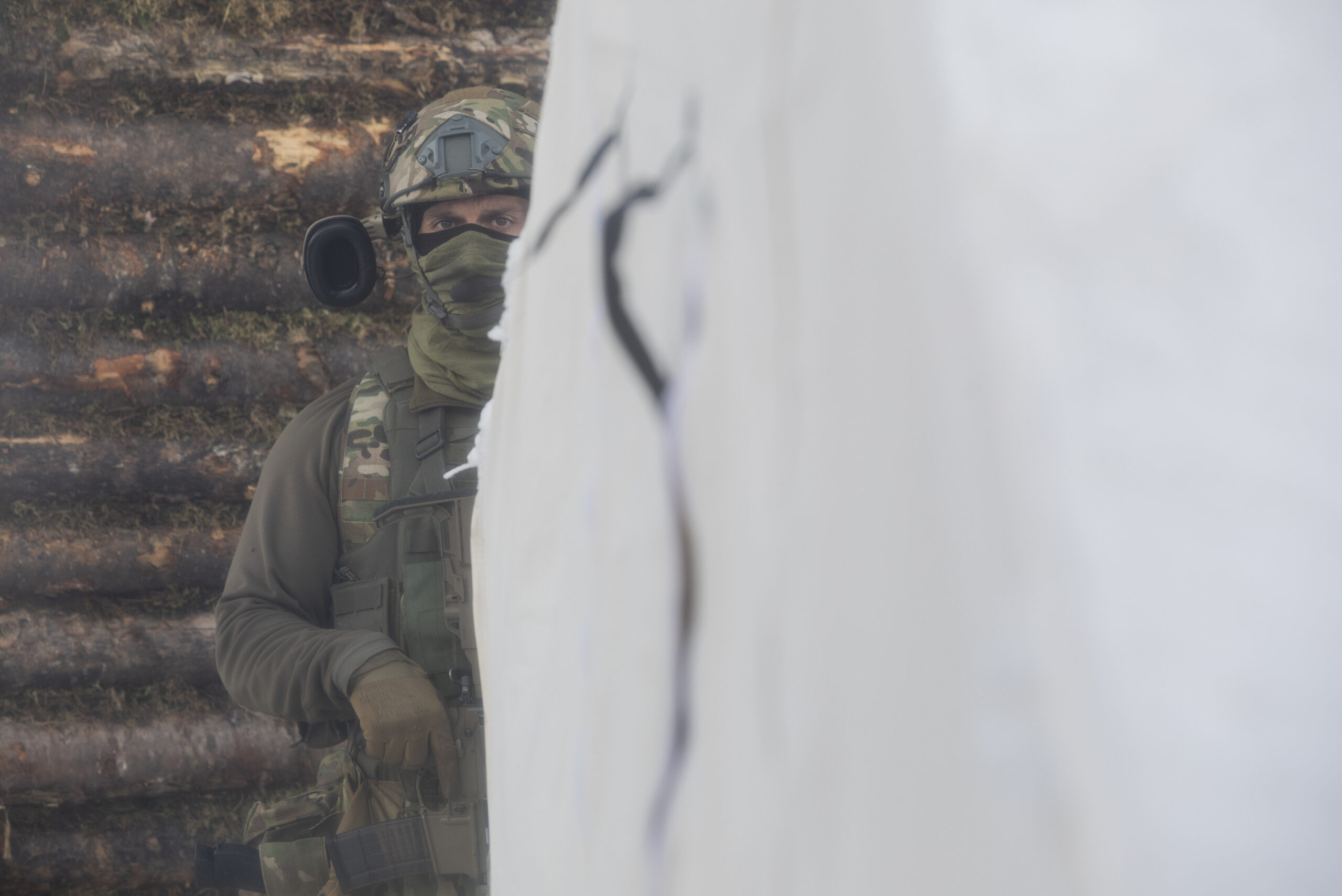
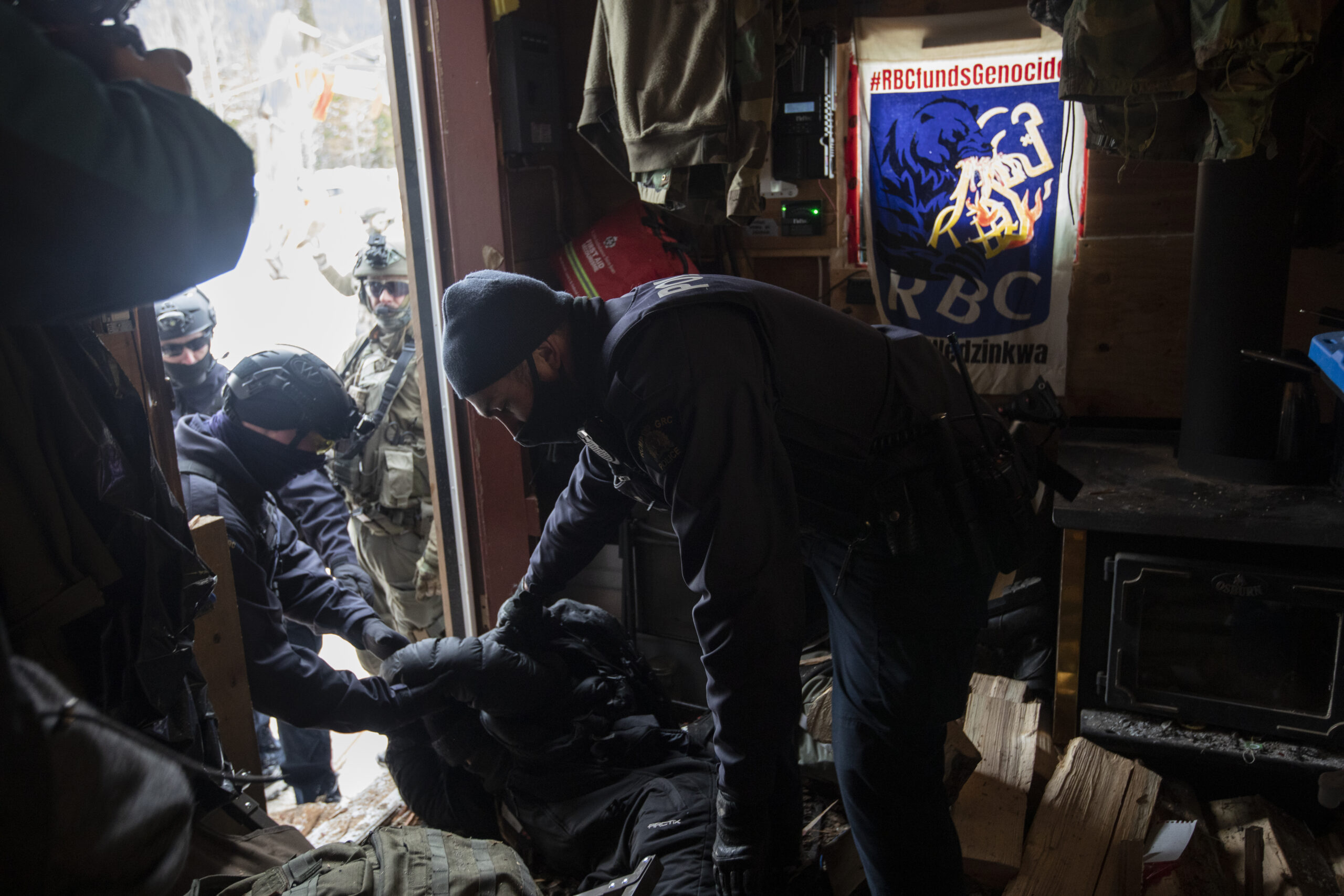
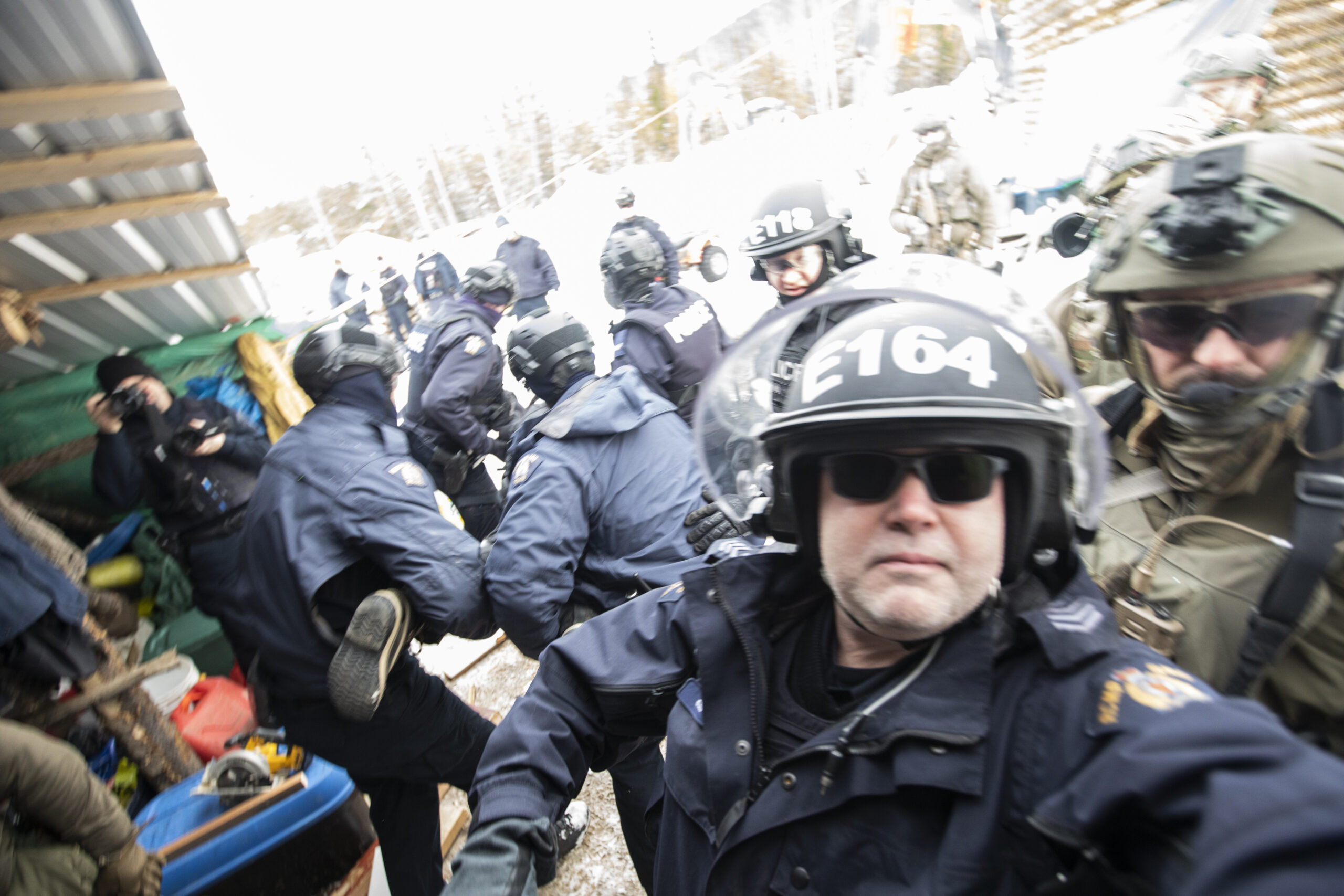
Within days, the cabin — belonging to the daughter of Dinï ze’ (Hereditary Chief) Woos — was allegedly burned and bulldozed according to land defenders and the personal belongings of everyone arrested were scooped up and trucked off to the dump. The site is now guarded around the clock by private security and police as Coastal GasLink drills under the river.
While camouflage-clad RCMP officers pointing assault rifles at unarmed Indigenous women makes for a splashy headline, the story isn’t over. Here’s where things are at one year later.
To date, RCMP have spent more than $25 million maintaining a constant presence on Wet’suwet’en territory. Most of that supports the force’s Community-Industry Response Group, commonly called C-IRG, a special unit set up in 2017 to police opposition to industrial projects.
“There have been 90 arrests made involving 80 different people,” Madonna Saunderson, with the RCMP’s media relations team, told The Narwhal. “Some people had been arrested more than once. There are 20 people currently facing charges. Two individuals have had their matters concluded in court.”
As The Narwhal reported earlier this year, the RCMP had already set the wheels in motion to conduct the raids prior to having discussions about meeting with the Hereditary Chiefs to resolve the situation. Internal emails obtained through freedom of information legislation revealed senior RCMP officials told the Office of the Wet’suwet’en — an administrative body which represents the Hereditary Chiefs — a meeting would be “difficult” if the land defenders did not first back down.
Former B.C. RCMP Assistant Commissioner Eric Stubbs denied allegations his messaging was a form of blackmail.
“For a number of years, I and others on my team have been actively involved in both in-person meetings, Zoom meetings and/or phone conversations with a goal to find resolutions that would eliminate the need for enforcement,” he wrote in an email to The Narwhal in April.
Stubbs just became the City of Ottawa’s police chief.
After the raid, audio recordings captured RCMP members joking about the people they’d just arrested, including making racist remarks about Indigenous women, whose faces were marked with red handprints to symbolize Missing and Murdered Indigenous Women and Girls, seemingly comparing them to orcs from The Lord of the Rings.
John Brewer, chief superintendent and gold commander of the special unit, told The Narwhal this behaviour was “beyond troubling” and said he put his entire team on notice after listening to the recordings.
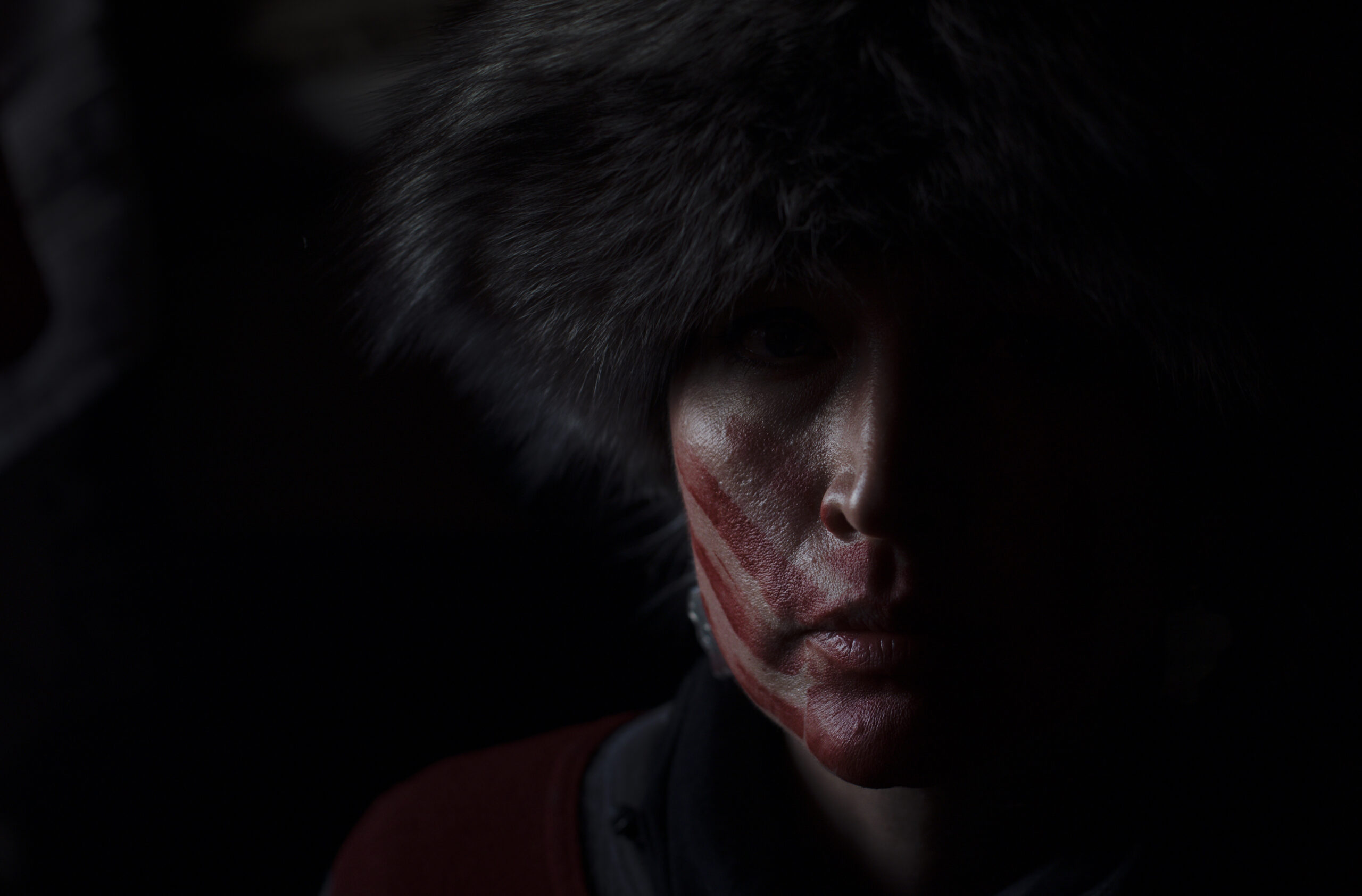
Land defenders briefly re-occupied the drill site last December but retreated in early January when word came that police were gathering for another raid.
In February, unknown assailants chased security workers from the site and allegedly used the company’s own heavy machinery to cause millions in damages to equipment and infrastructure.
That launched a months-long campaign of policing, which community members characterized as intimidation and harassment. Members of C-IRG conducted daily patrols through the Gidimt’en camp and village site, sometimes in the middle of the night and with children present. Private security sat in trucks parked outside the camp 24-7, filming everyone walking or driving on the remote road.
“After the violent confrontation against employees of Coastal GasLink on the Marten Forest Service Road on Feb. 17, the RCMP has been concerned for the safety of those in the area and has increased our presence patrolling around the industry camps and other camps along the route, and interacting with people in the area,” Saunderson wrote in an email to The Narwhal in May.
The RCMP has not made any arrests related to the incident and has not released any further details.
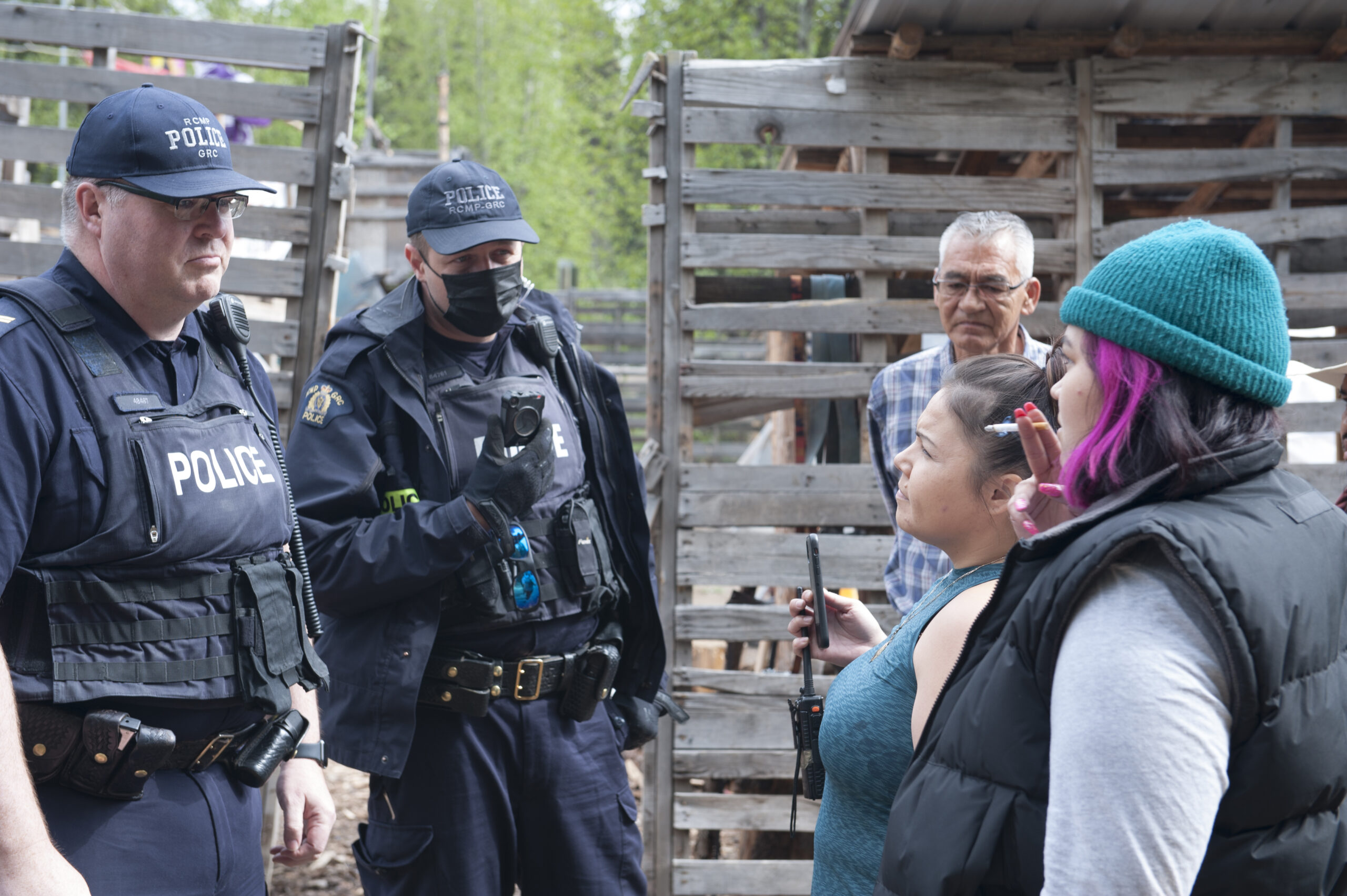
Community members filed a civil lawsuit against the RCMP, Coastal GasLink and the company’s private security force, Forsythe, in June.
“On multiple occasions, I have witnessed the RCMP on the ground take direction from Coastal GasLink workers,” Sleydo’ Molly Wickham, a Gidimt’en clan wing chief who lives on the territory with her family, told The Narwhal in May. “Their relationship is so close and intertwined that it’s hard to distinguish roles.”
Both Coastal GasLink and Forsythe denied any wrongdoing in legal responses filed with the courts and the allegations have not been proven at trial. The RCMP has not responded.
Earlier this month, Forsythe security workers told Dinï ze’ Na’moks he would be arrested if he walked past a gate on the access road to the drill site. Members of C-IRG were present but did not speak with Na’moks or his legal counsel.
“The human rights abuse here, the Indigenous Rights that are being stomped upon — in one sentence, all of that threat is there,” he told The Narwhal at the time.
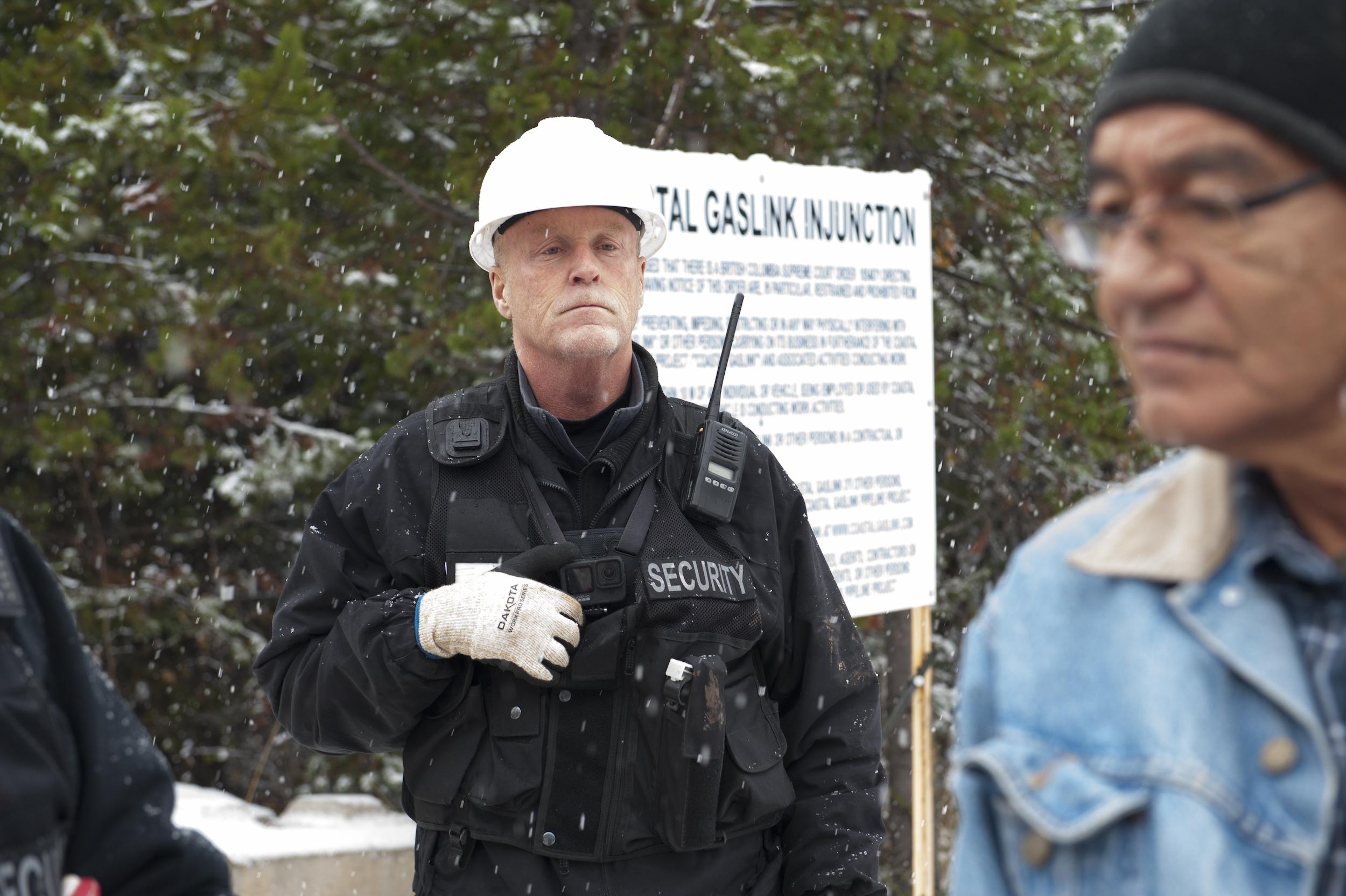
Na’moks and his fellow Hereditary Chiefs have not swayed from their opposition.
This summer, they invited guests to the territory to raft the river from its headwaters and join in a peace and unity summit, a four-day event that brought together Indigenous leaders, politicians, conservation groups and others to uplift Indigenous sovereignty, share space and join in solidarity.
The group, which included Cedar George-Parker from the Tsleil-Waututh Nation, several other Indigenous leaders, B.C. Green Party MLAs Sonia Furstenau and Adam Olsen and Severn Cullis-Suzuki, executive director of the David Suzuki Foundation, also witnessed land defenders being arrested.
“The narrative is that land defenders are criminals — they’re violent, they’re threatening and police forces are protecting [the public],” Cullis-Suzuki told The Narwhal at the time. “But this is just existence on the land. This is the right of Indigenous people here in Canada and they’re basically being harassed at great cost to them and their families, on the daily, for exercising their right.”
An RCMP statement about the arrests described the group observing the interactions between land defenders and police as “protestors” who “surrounded the police car to block it from leaving with the arrested man.”
“We have been here for the last few days as invited guests,” Furstenau said later. “We are not protesters. You are not protestors — this is your land.”
The conflict with police prevented Elders, chiefs and guests including Grand Chief Stewart Phillip and Amalaxa Louisa Smith from joining the rest of the group on the territory.

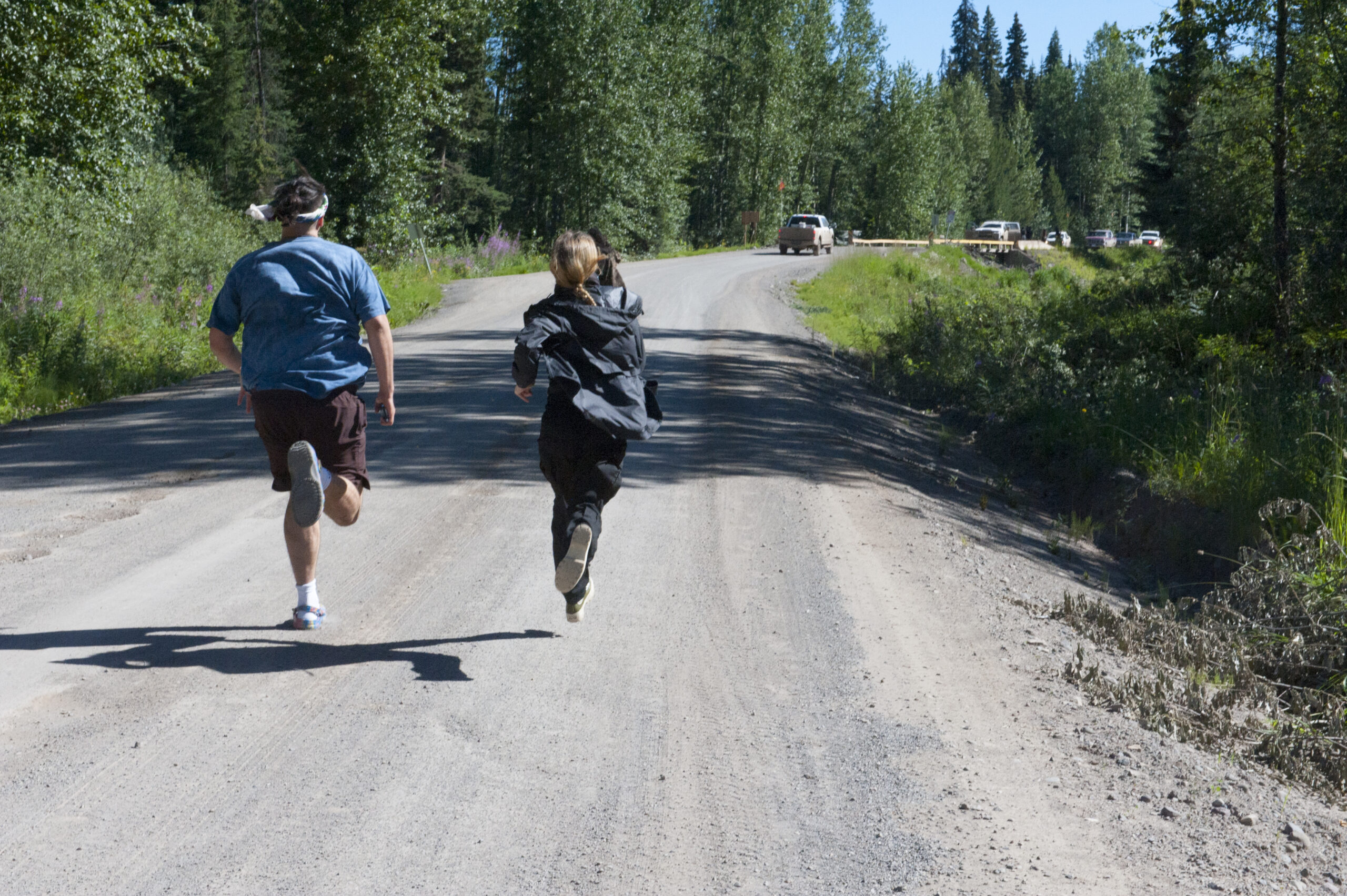
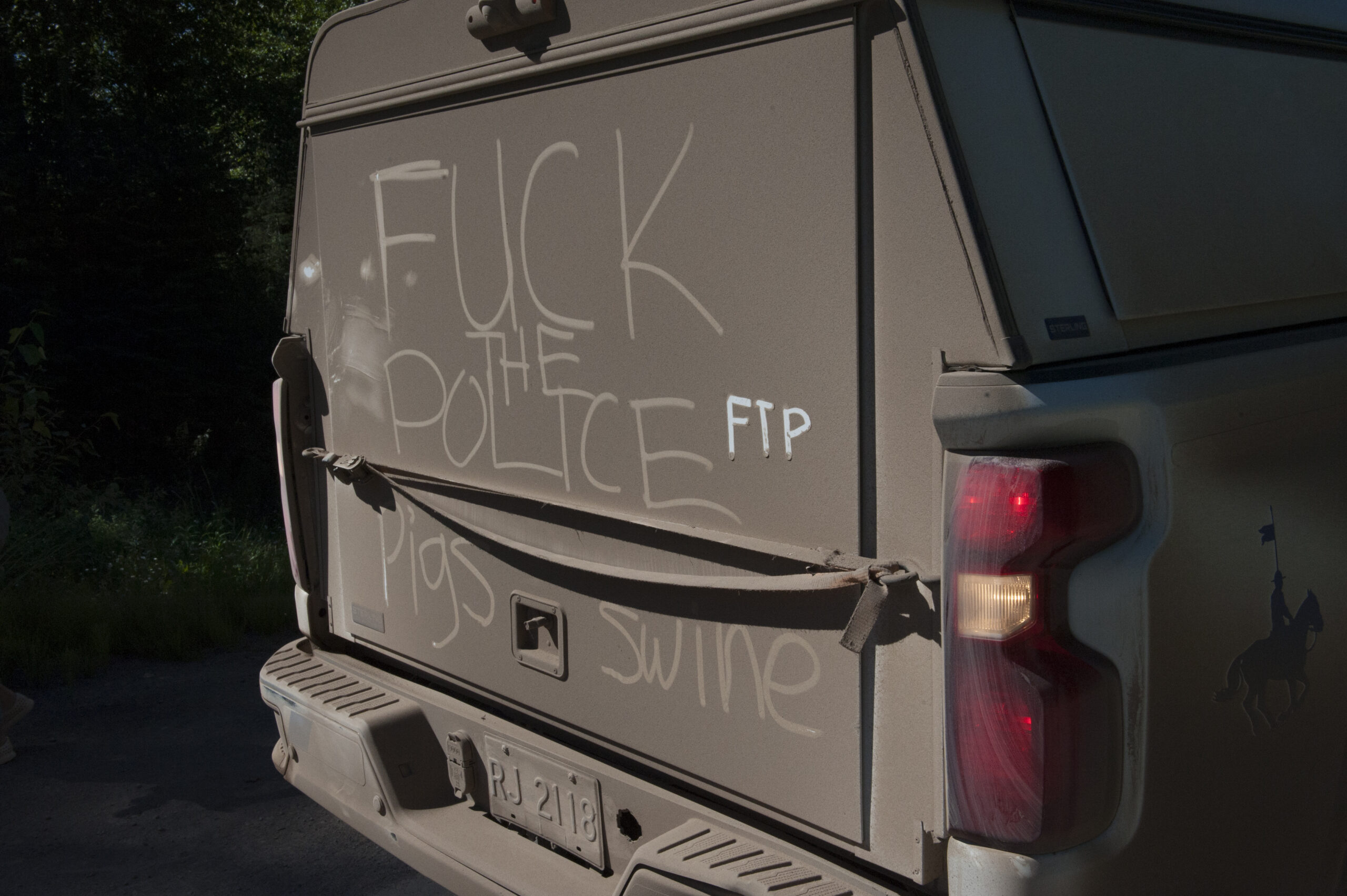
Later, guests convened for speeches and discussions.
“It’s really heartwarming to see all the people coming together in peace and unity across Canada to maintain the solidarity of the Wet’suwet’en,” Dinï ze’ Madeek told attendees at the event.
Madeek, who was known for his warmth, strength and commitment to ensuring his grandchildren and all future generations have clean air, water and food, recently passed away. Last week, Dinï ze’, Tsakë’ze and Skïy ze’, with members of the nation, held feasts and gathered in ceremony to honour his passing.
“Collectively we mourn, and help Madeek walk softly to be with his ancestors and Creator,” the Hereditary Chiefs wrote.
The pipeline is about 75 per cent complete, according to the company. On Wet’suwet’en territory, 100 per cent of the route has been cleared and 14.3 per cent of the pipe is in the ground.
Meanwhile, the 670-kilometre pipeline project continues to rack up environmental violations. Around the same time as last year’s raids, the company received non-compliance orders issued by B.C.’s environmental assessment office. Over the past year, Coastal GasLink has been issued numerous warnings, orders and over $240,000 in fines.
“We have done multiple inspections this year along the entire length of the pipeline, by both helicopter and ground, and found ongoing concerns — in particular with erosion and sediment control that could impact sensitive fish habitat,” a spokesperson with the assessment office wrote in an emailed statement.
The company also started drilling under the river at the riskiest time for salmon.
TC Energy, the pipeline operator and minority shareholder, did not directly answer questions about mitigation, monitoring or why it was starting the work while salmon were spawning, but told The Narwhal it follows all provincial regulations.
“Our work is fully authorized and permitted and has the unprecedented support of local and Indigenous communities across the project route,” the company wrote in October. “It is being completed in accordance with all permits, plans and requirements.”
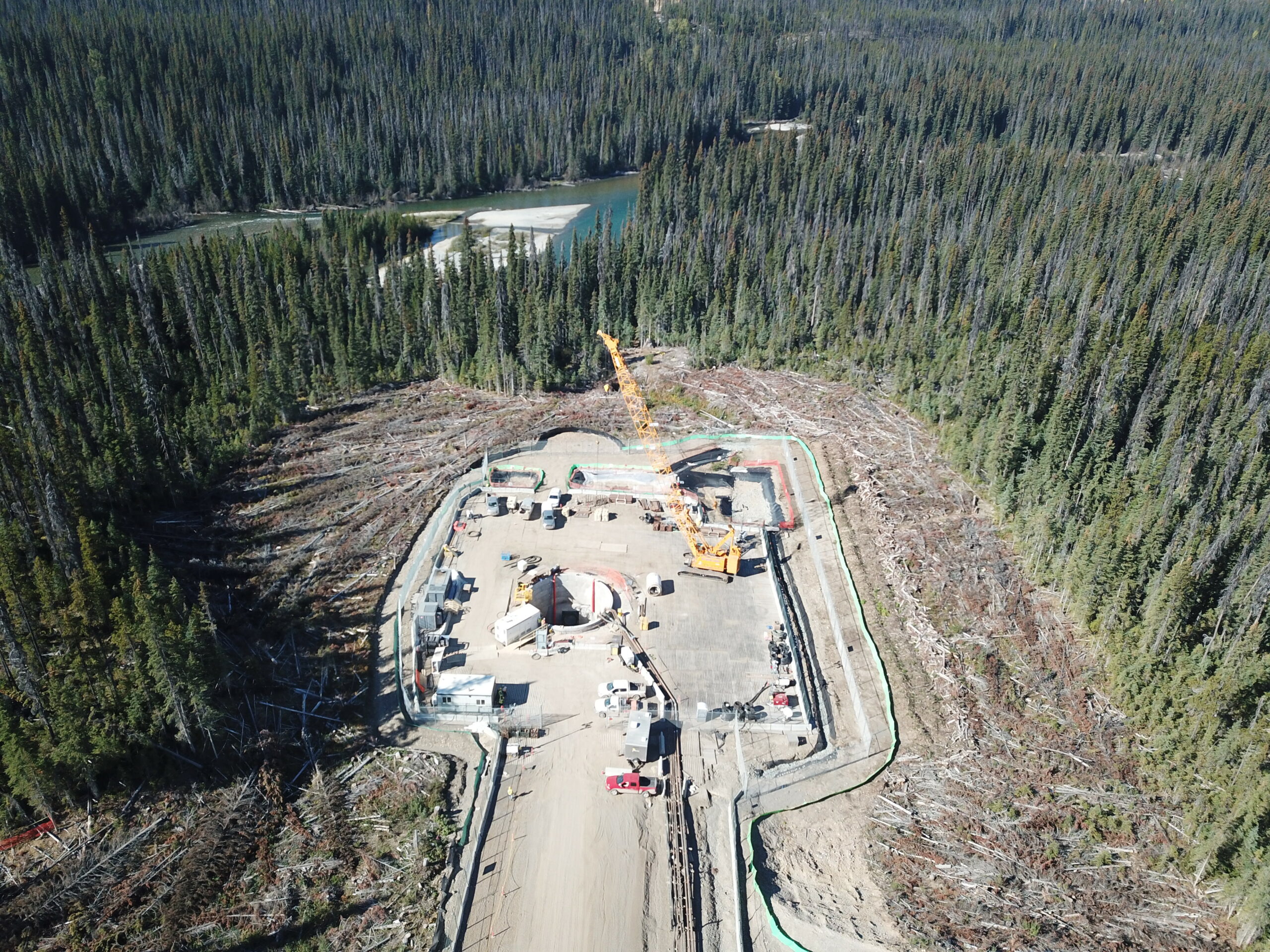
Mike Ridsdale, environmental assessment coordinator with the Office of the Wet’suwet’en, told The Narwhal one-third of all chinook salmon in the Skeena River system start and end their lives in Wedzin Kwa. If the pipeline impacted that population, the effects would be felt throughout the watershed.
“The problem is that we don’t know where that tipping point is,” he said in an October interview. “If you look at what happened with the East Coast cod and their downfall, it was because they didn’t know the tipping point — and they reached it and surpassed it and, bam, the cod disappeared.”
As part of its clearing activities, the company recently conducted blasting near a tributary of the river, less than one kilometre from a Wet’suwet’en camp and village site.
Earlier this month, TC Energy told The Narwhal “the creek remains flowing and blasting was not done in the creek” and maintained its crossing of the river is safe.
Na’moks told The Narwhal he’s confident the pipeline will never be completed but the impacts of construction can’t be undone.
“We’ve never agreed to this and we never will,” he said. “We’re doing our part to protect the planet, protect our land, Rights and Title, our humanity. And this is what we get.”
Get the inside scoop on The Narwhal’s environment and climate reporting by signing up for our free newsletter. When I visited my reserve, Moose Factory,...
Continue reading
Xatśūll First Nation is challenging B.C.’s approval of Mount Polley mine’s tailings dam raising. Indigenous...

As the top candidates for Canada’s next prime minister promise swift, major expansions of mining...

Financial regulators hit pause this week on a years-long effort to force corporations to be...

